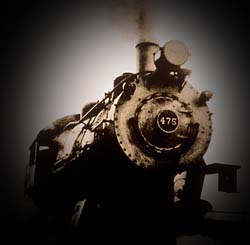 |


Natural Resources Fuel Industrialization
In 1859 Edwin L. Drake successfully used a steam engine to drill for oil near Titusville, Pennsylvania, that removing oil from beneath the earth's surface became practical. This breakthrough started an oil boom that spread to Kentucky, Ohio, Illinois, Indiana, and later Texas .Gasoline, a byproduct of the refining process, originally was thrown away. But after the automobile became popular, gasoline became the most important form of oil.
The Bessemer process, developed independently by the British manufacturer Henry Bessemer and American ironmaker William Kelly around 1850, soon became widely used. By 1880, American manufactures were using the new method to produce more than 90 percent of the nation's steel. This also triggered new uses of steel and it made innovative construction possible. One amazing structure was the Brooklyn Bridge that was completed in 1883 and it spanned 1,595 feet of the East River in New York City and was called a wonder of the world.
Invention Promote Change
By capitalizing on natural resources and their own ingenuity, inventors changed more than the landscape. Their inventions affected the very way people lived and worked. One person that really help contribute is Thomas Alva Edison who became a pioneer on the new industrial frontier when he established the world's first research laboratory in Menlo Park, New Jersey. By making electricity cheaper and safer, it allowed to make business boom all across the country.
|
11.2 Students analyze the relationship among the rise of industrialization, large-scale rural-to-urban migration, and massive immigration from Southern and Eastern Europe. |
|
|
|
|
|
-
Understand the effect of political programs and activities of the Progressives (e.g., federal regulation of railroad transport, Children's Bureau, the Sixteenth Amendment, Theodore Roosevelt, Hiram Johnson).
|
|